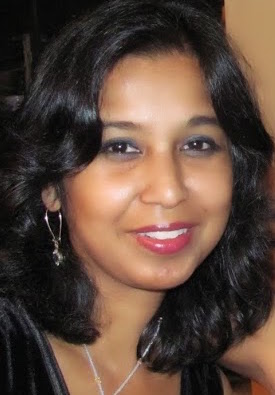
By Rajashree Ghosh
INDIA New England Columnist
With election fervor picking up and I wonder if this is going to be the year that the US elects a woman President. Why hasn’t the United States elected a female president? Why has our society been so resistant to female leadership when countries as various as Turkey, Ireland, Pakistan, Sri Lanka, Canada, France, and England have embraced women presidents and prime ministers? Chancellor Angela Merkel of Germany, Executive President Ellen Johnson-Sirleaf, Liberia, President Tsai Ing-wen, Taiwan kind of scream at the US asking “where is yours?”
India has had a woman in power, with former Prime Minister Indira Gandhi and later President Pratibha Patil serving a combined 21 of the past 50 years. Benazir Bhutto served Pakistan twice as prime minister. Indonesia boasts Megawati Sukarnoputri as a forerunner.
Bangladesh’s Prime Minister Sheikh Hasina served from 1996 to 2001, returned to office in the 2008 elections and was re-elected for a third term in 2014.
As an immigrant one revels in the opportunities available to women and men in the US. When we look at global indices supplied by the Human Development Reports which throws light on Gender Development Index (GII) India ranked 127 out of 152 countries. India has a GII value of 0.563, ranking it 127 of 152 countries in the 2013 index. In India, 10.9% of parliamentary seats are held by women, and 26.6% of adult women have reached at least some secondary education compared with 50.4% of their male counterparts.” Female participation in the labor market is 28.8% compared with 80.9% for men.
The United States has a GII value of 0.280, ranking it 55 out of 155 countries in the 2014 index. 19.4 percent of parliamentary seats are held by women, and 95.1 percent of adult women have reached at least a secondary level of education compared to 94.8 percent of their male counterparts. For every 100,000 live births, 28 women die from pregnancy related causes; and the adolescent birth rate is 31.0 births per 1,000 women of ages 15-19. Female participation in the labor market is 56.3 percent compared to 68.9 for men.
This data provides a good understanding of the real gender gap in human development achievements it shows how much India is lagging behind. And yet when it comes to political leadership, India has much to boast about.
I remember when Obama was elected in 2008 as do many of you. His being elected President shattered the barriers which as an outsider one feels should never have been there in the first place. With all the high development indices and high positioning globally, color should not have been a consideration. We heard of celebrations and some of us participated in those festivities. It was the celebration of a new voting pattern. This foreshadowed his accomplishments such as changing the way we produce and consume energy, the way doctors and hospitals treat us, the academic standards in our schools and the long-term fiscal trajectory of the nation. Gays can now serve openly in the military, insurers can no longer deny coverage because of pre-existing conditions, credit card companies can no longer impose hidden fees and markets no longer believe the biggest banks are too big to fail. Then there is Cuba and now Japan!
For those of us hoping Hillary Clinton makes it, she would be the first woman president and be referred to as “Mrs. President.” Edith Wilson was also referred as “Mrs President” with much disdain as she emerged as America’s most powerful person when Woodrow Wilson suffered a series of devastating strokes in 1919. So Hillary wouldn’t be the first. So what!
Erika Faulk who wrote on role of media bias states that the press paints women candidates in “stereotypical ways, the press may amplify the impression that women do not belong in the political sphere and it may minimize the potential effects of women as role models.” With Hillary Clinton, the media has analyzed her appearance, ridiculed her laugh, voice and clothes. Somehow Clinton has remained steadfast in public opinion as a competent and intelligent presidential choice.
But if she were to be elected in this highly gendered politics, her inauguration would throw some of the questions Obama’s did. And that is whether that would be a symbolic event of triumph or one of gendered optimism. Subsequently, of course there will be sexist analysis of her accomplishments.
I think the world over and especially in India, class (and caste) plays an important role in so far as candidacy is concerned. Women political leaders benefit from being part of dynasties and can fall back or move ahead with support of the cultural capital bestowed on them. With the US, women seem to brace for war – a gendered one – and to prove one’s mettle as a leader of the free world is a tough one. Despite favorable statistics and numbers that placed US in the forefront of economic achievements, the gendered political atmosphere is a severe drawback to successful women political leadership. Should there be a “she” in the Oval Office? Absolutely! And, let’s talk about her work, her accomplishments, and her policies soon.
(Rajashree Ghosh is a resident scholar at Brandeis Women’s Studies Research Center, Brandeis University)











